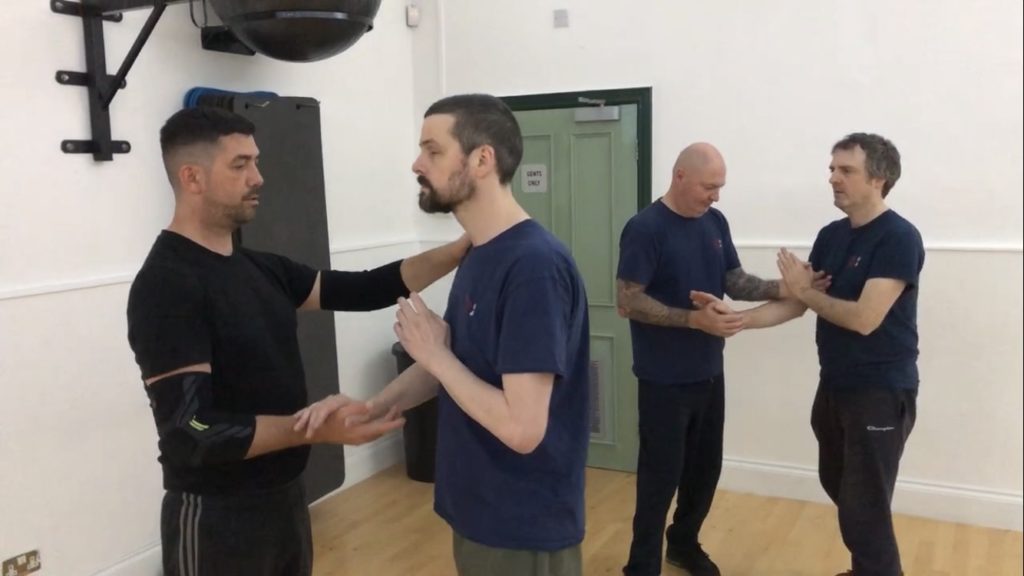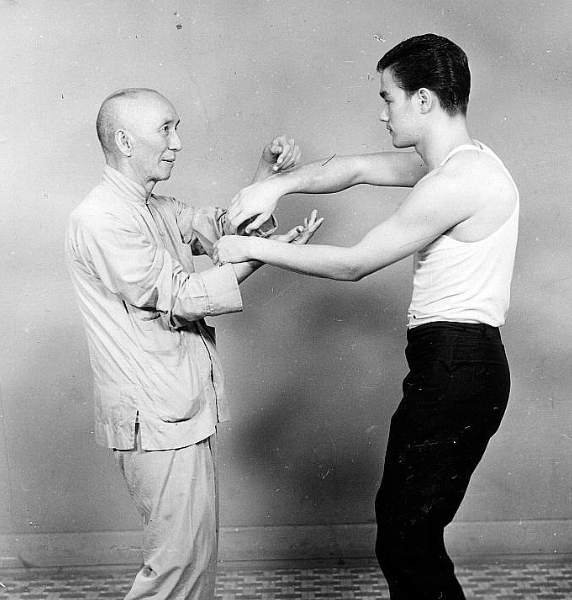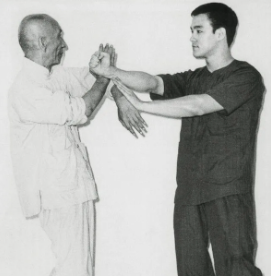The best self defence for seniors is one where training can be sustained. If you can’t sustain training for any length of time, it probably won’t help you much. To sustain any given training practice over the longer term it’s important you enjoy the process!
You can learn some basic strategies quickly which might help you in a self defence situation, such as where to strike an opponent for example. But ideally a class will help you stay in reasonable shape and give you self defence skills too.

Fitness is something which is going to help you in a self defence situation. Whether it is to run away or fight, being fit is one of the best tools if you’re in your later years.
So having a class which keeps you reasonably fit while learning self defence skills is what you need.
Best Self Defence For Seniors
Wing Chun is one of the best styles to learn into old age. In Wing Chun there are no high kicks. There’s no throws so you’re not going to be rolling and getting up from the ground continually, (although rolling is a useful skill to learn). The skill of Wing Chun is based on economy of motion and minimum movement. There’s no jumping on the spot or unnecessary fitness drills.
Wing Chun’s essence is simplicity. If you can end an attack with a single strike, it’s much better than having to learn multiple moves to achieve the same thing. Plus, it’s much easier to learn than long and complicated defence movements.
In practice, Wing Chun uses a sticky hands practice called Chi Sau. Chi Sau is suitable for seniors. It’s low impact, carefully controlled and you can learn in a safe environment. In certain styles of martial arts, you’re going to get hit! When you’re of senior age, any injury is more serious and recovery takes much longer than when you’re younger.
Chi sau allows you to learn in a comfortable and even fun setting.
Best Self Defence For Seniors – What Is Chi Sau?
Chi sau can be thought of as putting a fight scenario into a game situation. Two practitioners link arms and attempt to land a hit on each other without compromising their own defences. The interplay allows you to experiment with multiple fight situations in a game format. Here’s a picture of Bruce Lee training with his teacher Ip Man and linking arms in Chi Sau.

Chi Sau practice gives you several skills which are important for self defence scenarios:
- Hand sensitivity
- Striking and defending simultaneously
- Correct use of energy
- Conservation of energy
- Position of the body and arms
- Use of techniques to attack towards the centreline
See also Wing Chun chi sau for more in depth reading on Chi Sau.
Wing Chun For Health
Wing Chun is also known for its health benefits. Chi Sau and other Wing Chun drills and forms allow for light exercise which can be practiced at any age. It’s not too demanding or physically difficult.
In the Wing Chun hand patterns, known as forms, you learn standing exercises which promote good positions and structure. These forms also promote good health by virtue of the development of the mind body connection.

When practiced regularly, you are learning to relax the mind and body to generate internal energy flow. Standing practice is seen within the first form of Wing Chun. Later forms introduce turns and steps. Standing practice, also known as Zhan Zhuang can improve how you stand, sit, move, walk, breathe, and lie down. Over time, you build a “Qigong body,” making you more flexible, relaxed, mobile, and strong.
Emphasis on standing practice in Wing Chun depends on the particular lineage you study and is more prevalent in the internal Wing Chun lineages such as Shu Shong Tin Wing Chun.
